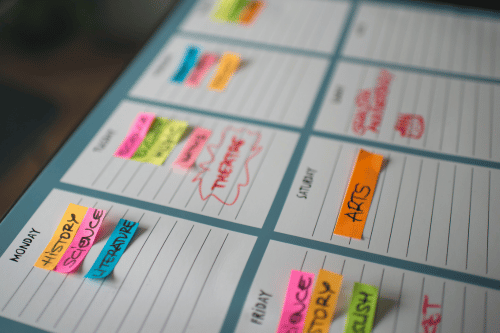CBT Exercises for ADHD: Practical Tools to Improve Daily Life
Cognitive-behavioral therapy (CBT) is a powerful tool for managing Attention Deficit Hyperactivity Disorder (ADHD). This evidence-based approach provides practical strategies that help people build structure, shift negative thought patterns, and improve executive functioning. For individuals with ADHD, CBT techniques can transform daily functioning and overall quality of life.
At Treat Mental Health Tennessee, we use CBT to support those struggling with core symptoms like distractibility, impulsive behaviors, and time mismanagement. CBT is part of our personalized treatment plans that focus on mental health conditions across age groups and severity levels. Here’s how CBT can help you or a loved one take control of everyday life with ADHD.
Understanding CBT
What Is CBT?
Cognitive-behavioral therapy (CBT) is a structured, short-term therapeutic approach that helps individuals recognize and modify unhelpful thought and behavior patterns. It focuses on reshaping negative thinking patterns through specific behavioral strategies and interventions for attention deficit. CBT is a highly evidence-based treatment, especially effective for mental health issues such as ADHD, anxiety disorders, and depression.
Cognitive therapy helps individuals build lifelong skills that promote positive behaviors and reduce negative thought patterns. CBT is categorized under psychosocial treatments and is widely used in behavior management training across various mental disorders.
How CBT Works for ADHD
CBT addresses the underlying cognitive distortions that interfere with executive functioning. It targets attention-deficit/hyperactivity disorder symptoms like forgetfulness, time blindness, and emotional dysregulation. CBT teaches practical techniques to improve organization, time management, and daily task execution.
This therapy helps reduce residual symptoms in medication-treated adults while providing structure for nonmedicated adults as well. In therapy sessions, clients work on specific goals through cognitive-behavioral interventions, including grounding techniques and relaxation techniques.
Key CBT Exercises for ADHD
Cognitive Restructuring
Cognitive restructuring helps individuals reframe automatic negative thoughts. These cognitive distortions can include “I’ll never succeed,” or “I can’t stay focused.” These distorted beliefs affect everyday life and increase stress.
Through guided sessions, clients learn how to identify and challenge these thoughts. Over time, they build a more balanced perspective that supports better mental well-being and reduces recurrent life setbacks.
Impulse Control Strategies
Impulsive behaviors are a key challenge for people with ADHD. CBT uses behavior modification strategies like delay tactics, self-monitoring, and positive reinforcement to reduce problematic behaviors. Exposure therapy may also be integrated to help manage triggering environments.
Therapists introduce Distractibility Delay Interventions to slow response patterns. These techniques promote conscious decision-making in real life, supporting emotional regulation and social skills.
Time Management Techniques
Time management strategies are critical for those with ADHD. CBT teaches people how to break down lengthy assignments or complicated tasks using a method called successive approximation. This method improves motivation by focusing on small wins.
Sticky notes, alarms, and color-coded calendars become helpful tools. Clients also learn how to schedule tasks around their energy peaks to maximize executive functioning throughout the day.
Practical Implementation of CBT Exercises
Thought Journaling
Thought journaling is an exercise that helps track emotions, triggers, and automatic thoughts. This practice reveals patterns of negative thinking and provides insight into mental health conditions like ADHD. In therapy sessions, journaling becomes part of CBT homework assignments.
It helps clients build awareness, set realistic expectations, and develop a deeper understanding of how thoughts impact behavior. Over time, this tool supports improved emotional clarity and daily functioning.
Task Breakdown
Task breakdown is a vital CBT technique for people who struggle with planning of assignments and completing complex tasks. Breaking down tasks into smaller chunks reduces anxiety and increases focus. This is especially helpful for nonmedicated adults and students.
The goal is to make each step manageable. Clients may use sticky notes, checklists, or digital apps to track progress, which builds confidence and reinforces positive behaviors in daily life.
Mindfulness Practices
Mindfulness techniques support attention training and stress reduction. These practices teach clients how to center their attention and slow intrusive thoughts. Mindfulness-based interventions, such as deep breathing or body scans, are integrated with CBT modules to enhance executive function.
Mindfulness can be used throughout the day—from school settings to workplace routines—to reduce distractibility and promote a grounded mental state. These interventions are a practical strategy to improve real-life performance.
Benefits of CBT Exercises for ADHD
Improved Organization
CBT helps develop behavioral skills that support organized thinking and environmental control. Clients learn to create a detailed routine using tools like sticky notes, color coding, and digital reminders. This structure supports better daily functioning.
With improved organizational skills, people with ADHD experience fewer disruptions, better task completion, and enhanced quality of life. Behavior strategies learned in therapy carry over into day-to-day life, creating a more structured living environment.
Reduced Procrastination
Procrastination stems from executive dysfunction and anxiety about task initiation. CBT provides actionable strategies to combat this avoidance. Individuals learn to identify internal barriers and apply behavioral strategies like task initiation prompts and motivational statements.
Therapists also use positive reinforcement to celebrate progress. Over time, clients experience increased productivity, better time management, and decreased avoidance in everyday life.
Enhanced Emotional Regulation
Emotional dysregulation is a major symptom of ADHD. CBT uses grounding techniques, thought journaling, and exposure therapy to help people understand and manage their emotional responses. Clients learn how to pause, reflect, and act with intention.
These interventions improve emotional control, reduce reactivity, and support better relationship dynamics. Improved emotional regulation leads to a more stable and productive daily routine.
CBT for Different Age Groups
Tailoring CBT for Children with ADHD
Children benefit from behavioral therapy that includes play-based and reward-based strategies. CBT exercises for children often include games, visuals, and behavior charts that track positive behaviors. Behavior modification is combined with positive reinforcement to shape habits early on.
Parents play an important role through behavior management training, where they reinforce what’s learned in therapy at home. This promotes consistency in daily functioning and supports long-term mental well-being.
Adapting CBT for Adults with ADHD
CBT for adults with attention-deficit hyperactivity disorder is more goal-oriented and structured. Adults focus on executive function, emotional regulation, and real-world planning. Interventions include calendar planning, digital organization tools, and skill-building exercises.
Therapists guide adults in applying cognitive-behavioral therapy principles to real life—especially in work, parenting, and household responsibilities. These techniques help adults navigate daily tasks, reduce stress, and improve productivity.
Combining CBT with Other Treatments
CBT and Medication Synergy
For many, medication provides foundational symptom relief, while CBT addresses deeper behavioral and cognitive patterns. This combination of treatments forms a standard treatment model that enhances long-term results.
CBT teaches coping skills for continued symptoms that medication alone cannot address. This dual approach helps both children and adults improve their quality of life and manage co-occurring mental health disorders.
Integrating Skill Building and Goal Setting
CBT emphasizes behavioral skills and future planning. Clients work on goal-setting techniques and track their progress using personalized plans. These goals might include reducing procrastination, improving communication, or completing a complex task.
Skill building also includes training in organizational strategies, mindfulness, and social communication. This integrated approach supports continued growth and strengthens mental health outcomes across daily life.
Finding the Right Therapist
What to Look for in a CBT Therapist
Finding a qualified CBT therapist is key. Look for a licensed therapist who specializes in ADHD and has experience with CBT for mental health issues. The therapist should understand how ADHD impacts executive function, social skills, and emotional control.
A good CBT therapist will provide a customized treatment plan, use evidence-based techniques, and assign helpful tools such as journals, checklists, and mindfulness practices. Sessions should include behavior modification strategies and focus on practical tools that work in everyday life.
Accessing ADHD-Specific CBT Resources
At Treat MH Tennessee, we offer therapy sessions for clients with ADHD, including those experiencing co-occurring mental health conditions. Our CBT therapists are trained to address both childhood and adult ADHD. We also provide access to supportive tools, treatment platforms, and community resources like Brightside Health.
We accept providers such as United Healthcare and guide how to start your mental health journey. Whether you’re seeking support for yourself or your child, we help you find potential solutions for managing ADHD through CBT and other therapeutic approaches.
Final Thoughts
CBT exercises for ADHD offer an effective solution for managing symptoms in daily life. From cognitive restructuring to task breakdown and mindfulness techniques, CBT provides practical strategies to support daily functioning. These tools help reduce impulsive behaviors, improve time management, and promote a structured daily routine.
At Treat MH Tennessee, we specialize in treating attention-deficit hyperactivity disorder with a highly evidence-based treatment approach. Whether used alone or in combination with medication, CBT helps people build skills that support lifelong success. If you’re ready to explore this treatment option, reach out today to schedule a consultation with a mental health professional.
FAQ's
Most individuals begin noticing changes within 4–6 weeks of consistent CBT practice, though timing varies by person and symptom severity.
Yes, some CBT exercises can be self-guided, but working with a licensed therapist ensures proper technique and accountability.
Yes, there are several ADHD-focused CBT workbooks that provide structured guidance, daily prompts, and worksheets tailored for executive function challenges.
Many insurance providers, including United Healthcare, cover CBT sessions for ADHD when prescribed as part of a treatment plan by a mental health professional.










